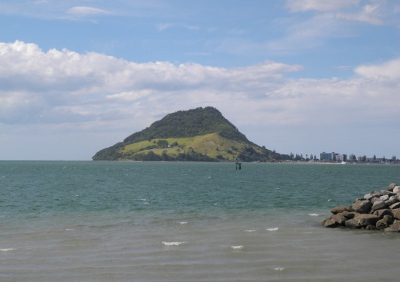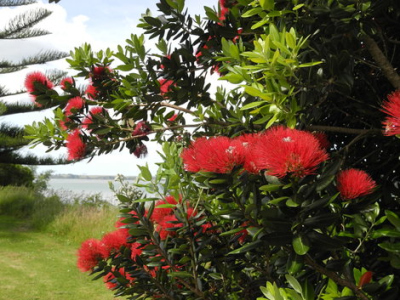Die Inhalte dieser Seite sind leider nicht auf Deutsch verfügbar.
Seitenpfad:
- Startseite
- ...
- INTERCOAST
- Latest News
- Archiv
- Newslist-Seite
- New Zealand experiences - A report b...
INTERCOAST
New Zealand experiences - A report b...
During my first week in Hamilton, I was struggling with my jetlag and got accustomed to my new work space. At the Uni, I was warmly welcomed by the staff of the Geography Department. The following week, I boarded a plane again to travel to the New Zealand Coastal Society’s annual conference in Dunedin on the South Island. Here I presented my PhD project to an interdisciplinary audience from research institutions, councils, and consultancies. Back in Hamilton, I had another busy week. Next to organising my first research phase, I was looking for a room and buying a car. Then I could finally start off for my first weeks in Tauranga, where one of my case studies is located.
The case revolves around the dredging of the shipping channel in the harbour by the Port of Tauranga. Some years ago, the Port was seeking for a resource consent on a major dredging campaign to deepen and widen the shipping channel. This provoked a number of submissions opposing the planned project. The main opposition came from local Maori. For them, Te Awanui (Tauranga harbour) is important to get kaimoana (sea food). Additionally, they are strongly related to the landscape, which they traditionally have guardianship over and care for by the concept of kaitiakitanga.

View from Sulphur Point over Te Awanui to Mauao - Picture by Mara Ort
The tangata whenua (People of the land) relationship to their environment is also reflected by the proverb “Ko au ko te moana, Ko te moana ko au” (I am the sea, the sea is me). The submissions by the local iwi (tribes), as well as the ones from environmentalists, surfers and other opponents resulted in a court case at the Environmental Court. The Court’s decision was in favour of the Port. Also when local iwi appealed against the decision, the High Court turned their appeal down, and the dredging was carried out from October 2015 until September 2016. Driving my car on the curvy and steep highway over the Kaimai range to Tauranga, I was excited about how everything would work out. Would I find interviews partners and get access to relevant documents and newspaper articles?

A blossoming Pohutukawa tree (New Zealand Christmas tree). Famous for its beautiful red blooms - Picture by Mara Ort
Hei kona mai!
I arrived in time for morning tea at the Coastal and Marine Field Station in Tauranga, and was supplied with tea, cake and biscuits. This was a good start, and in the following three weeks, I could do several interviews with people who were involved in the conflict around the dredging. I am very thankful that they took the time and shared their valuable views, opinions, and knowledge. Next to that, I visited the local library several times, and looked through their old paper card index for newspaper articles relating to any conflicts around dredging (Te Awanui is dredged since 1968). Every time I found an entry, I went to get the microfilm of the newspaper and fiddled it in the microfilm reader. This was a good reminder that the internet doesn’t by far know everything, and that it is really important to be on site in the field!



